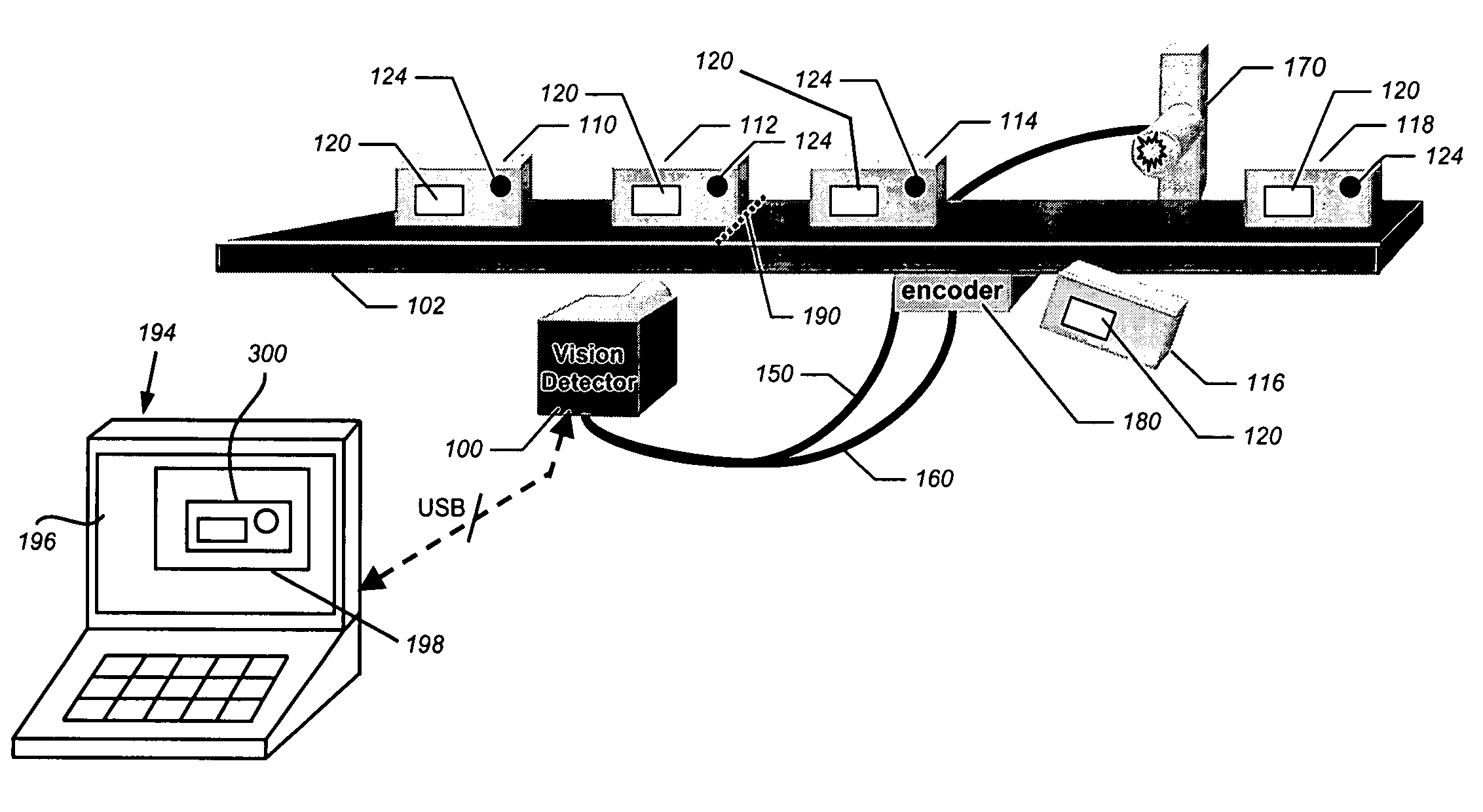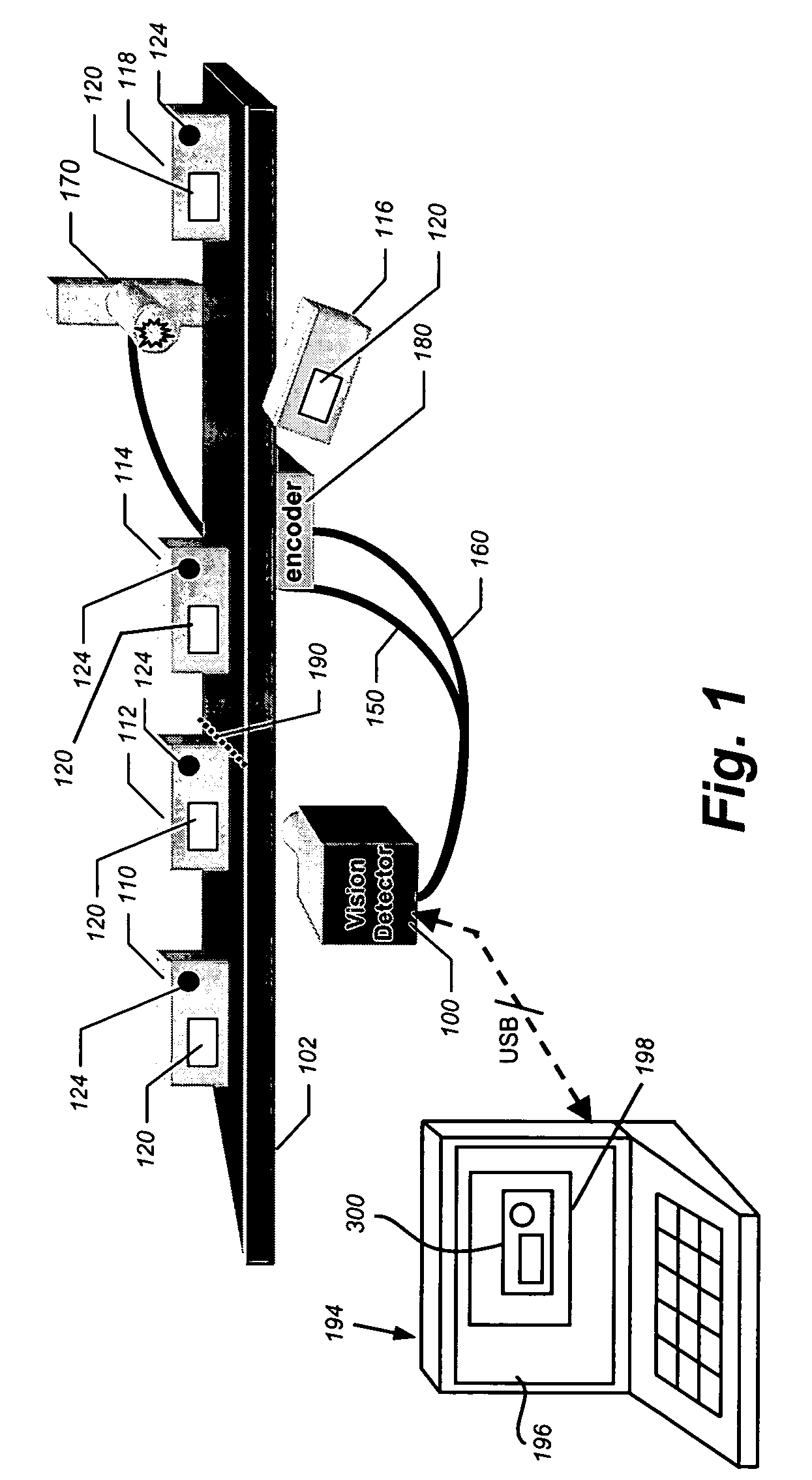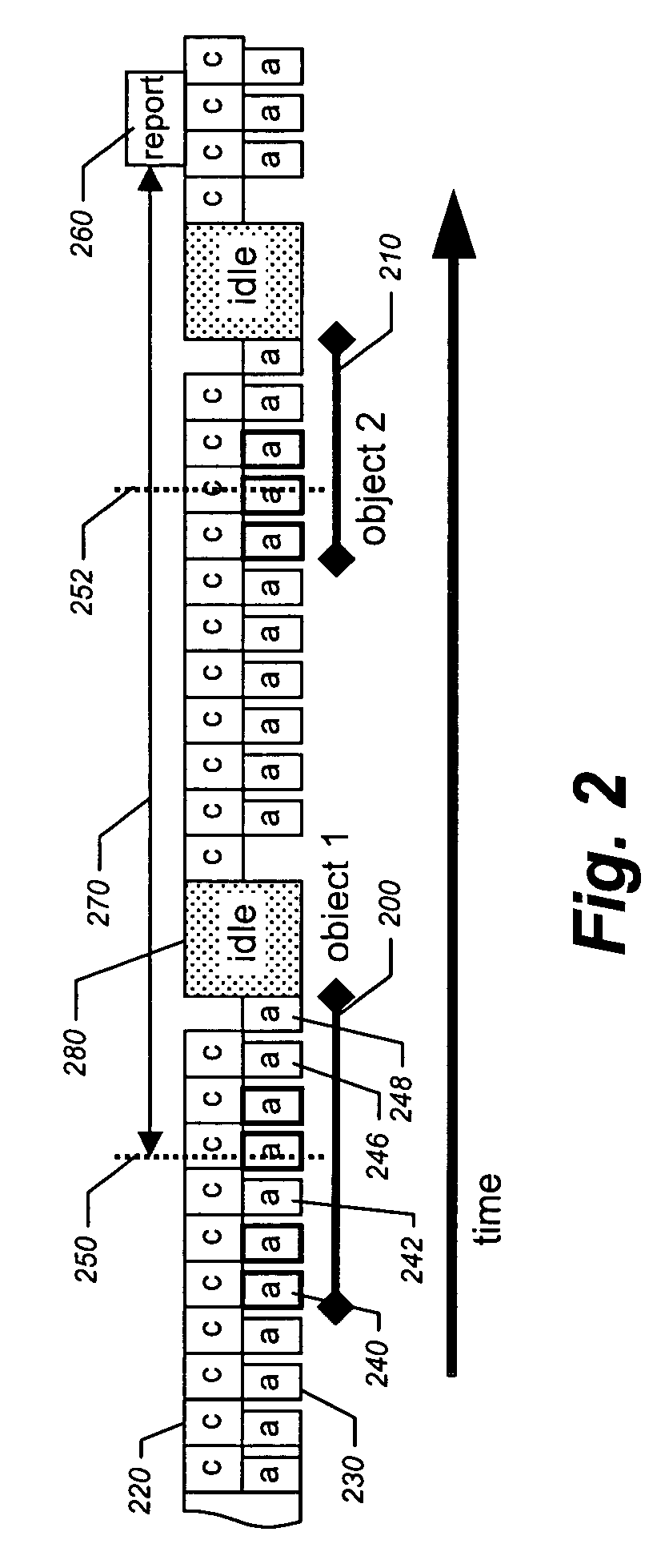System and method for assigning analysis parameters to vision detector using a graphical interface
a graphical interface and analysis parameter technology, applied in the field of automatic detection and inspection, can solve the problems of difficult to arrange the photodetectors, the simple sensing of light intensity reflected from a point on the object is often insufficient for inspection, and the use of automatic inspection using photodetectors
- Summary
- Abstract
- Description
- Claims
- Application Information
AI Technical Summary
Benefits of technology
Problems solved by technology
Method used
Image
Examples
Embodiment Construction
[0142]FIG. 18 shows a diagram of a Graphical User Interface (GUI) screen 1800 for a Human-Machine Interface (HMI), interconnected with a vision detector (100) like that shown and described with reference to FIG. 1 above and in connection with the above-incorporated-by-reference METHOD AND APPARATUS FOR VISUAL DETECTION AND INSPECTION OF OBJECTS, by William M. Silver. The screen can reside on any acceptable HMI, including, but not limited to an Laptop Personal Computer (PC); Desktop PC, personal digital assistant or Notebook Computer (for example PC 194) having an appropriate communication link (e.g. USB, wireless, network cable, etc.) with the vision detector (100). An appropriate HMI interface (described in connection with the above-incorporated-by-reference METHOD AND APPARATUS) interconnects with the vision detector's DSP to allow communication with the FMI. Note that the layout and menu contents of the illustrated screen 1800 is exemplary, and a variety of layouts and menu items...
PUM
 Login to View More
Login to View More Abstract
Description
Claims
Application Information
 Login to View More
Login to View More - R&D
- Intellectual Property
- Life Sciences
- Materials
- Tech Scout
- Unparalleled Data Quality
- Higher Quality Content
- 60% Fewer Hallucinations
Browse by: Latest US Patents, China's latest patents, Technical Efficacy Thesaurus, Application Domain, Technology Topic, Popular Technical Reports.
© 2025 PatSnap. All rights reserved.Legal|Privacy policy|Modern Slavery Act Transparency Statement|Sitemap|About US| Contact US: help@patsnap.com



